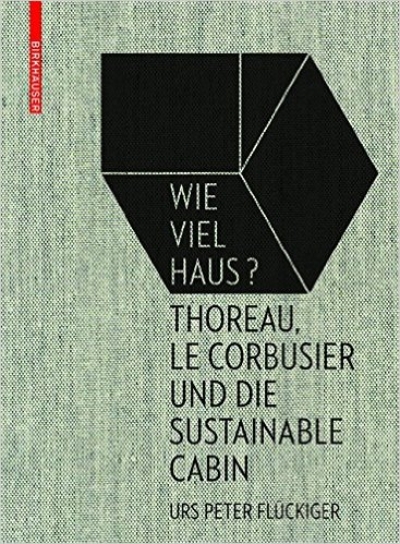
Wie viel Haus? Thoreau, Le Corbusier und die Sustainable Cabin
Wieviel Haus braucht der Mensch?
Leben und Wohnen, auf ein Minimum reduziert, fasziniert seit Generationen: Der Schriftsteller Thoreau lebte 1845 - 1847 in einer selbst gebauten Hütte im Wald. Le Corbusier baute 1952 für seine Frau und sich eine Hütte an der Cote d‘Azur.
Davon inspiriert, baute Urs Peter Flückiger mit seinen Studenten eine ökologisch und ökonomisch nachhaltige "Cabin" in der texanischen Prärie. Alle drei Projekte eint die Idee des minimalen Raumes und dessen Bezug zur umliegenden Natur.
Das Buch analysiert in Text, Zeichnungen und Fotografien die 3 Projekte und zeigt Parallelen und Zusammenhänge auf. In Anlehnung an Tolstois Erzählung Wieviel Erde braucht der Mensch? fragt der Autor: "Wieviel Haus braucht der Mensch?" und leistet damit einen pointierten Beitrag zur aktuellen Diskussion um den Wohnraumbedarf.
In text, drawings, and photographs, this book analyses three projects and shows parallels and similarities. Inspired by Tolstoy’s story How Much Land Does a Man Need?, the author asks: "How much house does a man need?", thereby providing a pointed contribution to the current discussion on the requirement for housing.
The space we live in, reduced to a minimum, has been fascinating us for generations – the writer Thoreau lived in a self-built hut in the forest from 1845 –1847. In 1952, Le Corbusier built a hut at the Côte d'Azur for himself and his wife. Inspired by this, Urs Peter Flückiger, together with his students, built an ecologically and economically sustainable cabin in the Texan prairie. All three projects share the idea of minimal space and its relationship with the surrounding nature. In text, drawings, and photographs, this book analyses the three projects and shows parallels and similarities. Inspired by Tolstoy’s story How Much Land Does A Man Need?, the author asks: "How much house does a man need?", thereby providing a pointed contribution to the current discussion on the requirement for housing.
also available in engl. and french!
french: 978-3-0356-1029-1
english: 978-3-0356-1028-4

































































































